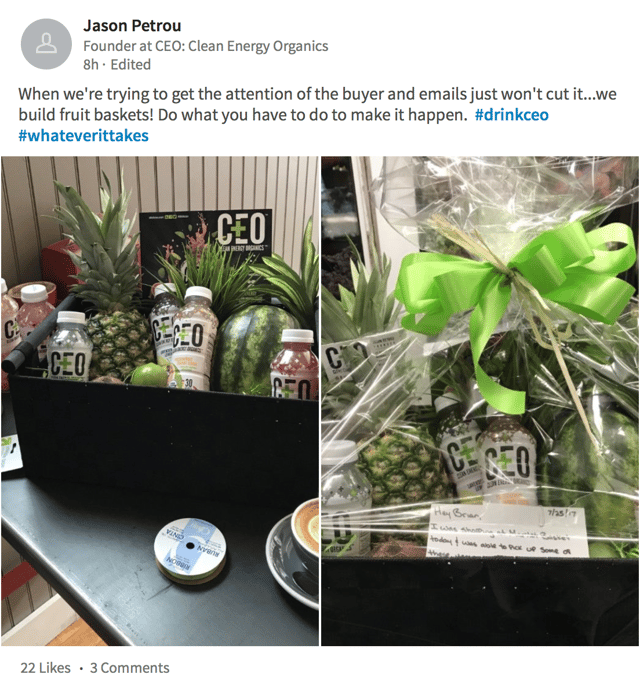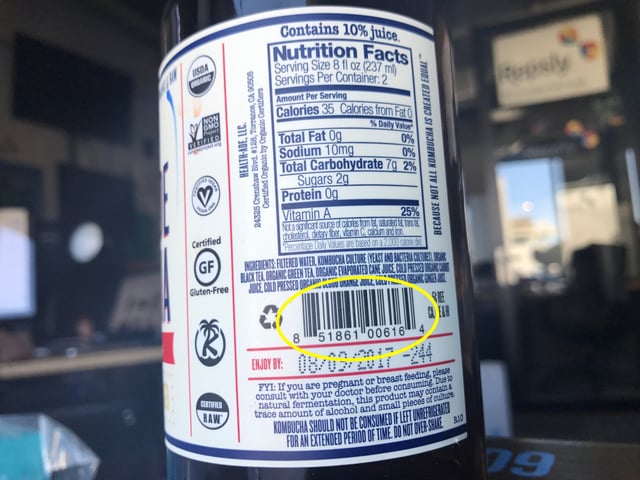Make a Personal First Impression
Convincing retailers you're invested in making sure your product sells well at their store begins with your introduction to the buyer. To get off on the right foot, try reaching out with a personal note (or even delivery!) rather than just an email.
For example, Clean Energy Organics sent buyers fruit baskets to introduce themselves and their products. Not only were these a memorable way to prove the brand is committed to building a profitable relationship, but they associate the brand with the fresh, organic ethos they'll bring to the category.

Demonstrate Your Commitment
Once you've gotten a buyer's attention and familiarized them with your product, it's time to prove to them that you have a plan for driving success in the store. Proving simply that your products have sold well at other retailers is a great first step, but the most successful companies go beyond sales data and show retailers how exactly they've supported and influenced those sales in the past, and how they plan to do the same going forward.
If you have a team that represents your brand out in the field, this is the perfect time to highlight their work. From setting up new displays, to merchandising your shelves and holding sampling events, your field team not only supports your brand, but also drives traffic and sales for the retailer.
This is also a great time to showcase any relationships your brand has with brokers or distributors. Who will step up when a product goes out of stock? Who's going to deliver the products to support sampling events or seasonal displays? Prove to retailers that you and your partners will be there to support their store, as well as your products.
We talked to the co-founder of Nantucket Nectars and emerging beverage investor, Tom First, to find out how brands can work with retailers to make sure the relationship is profitable for both parties. To see the exclusive interview, check out the video below!







